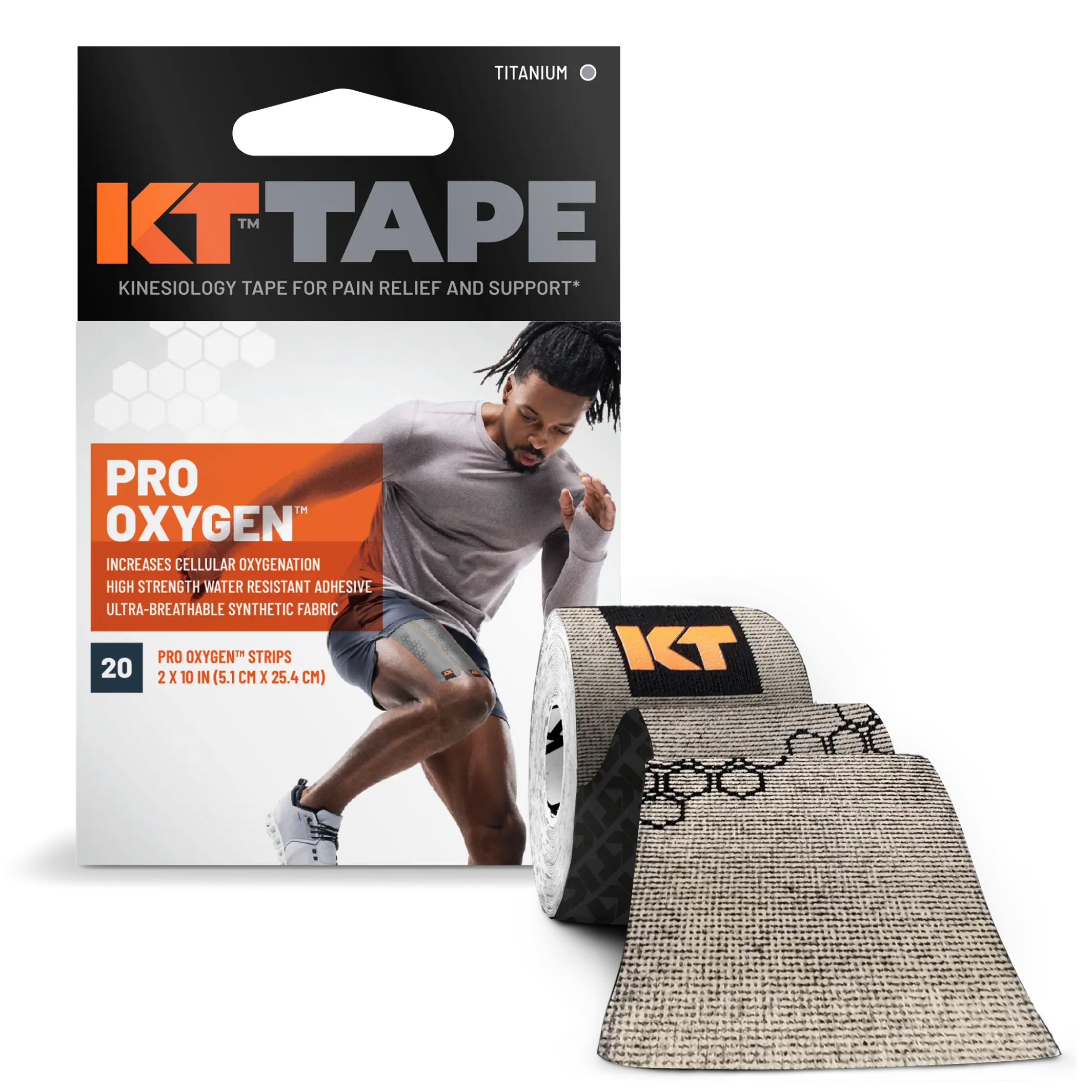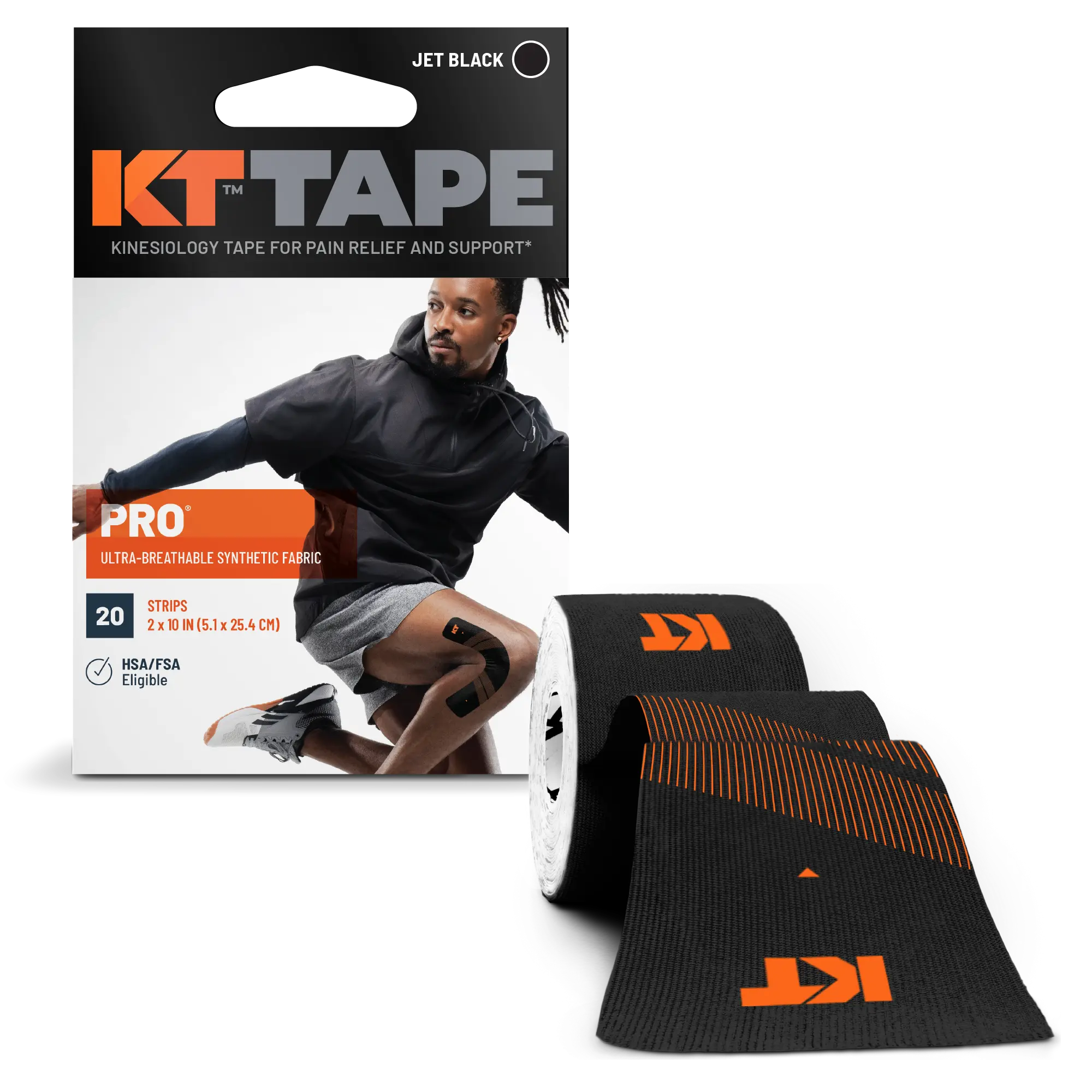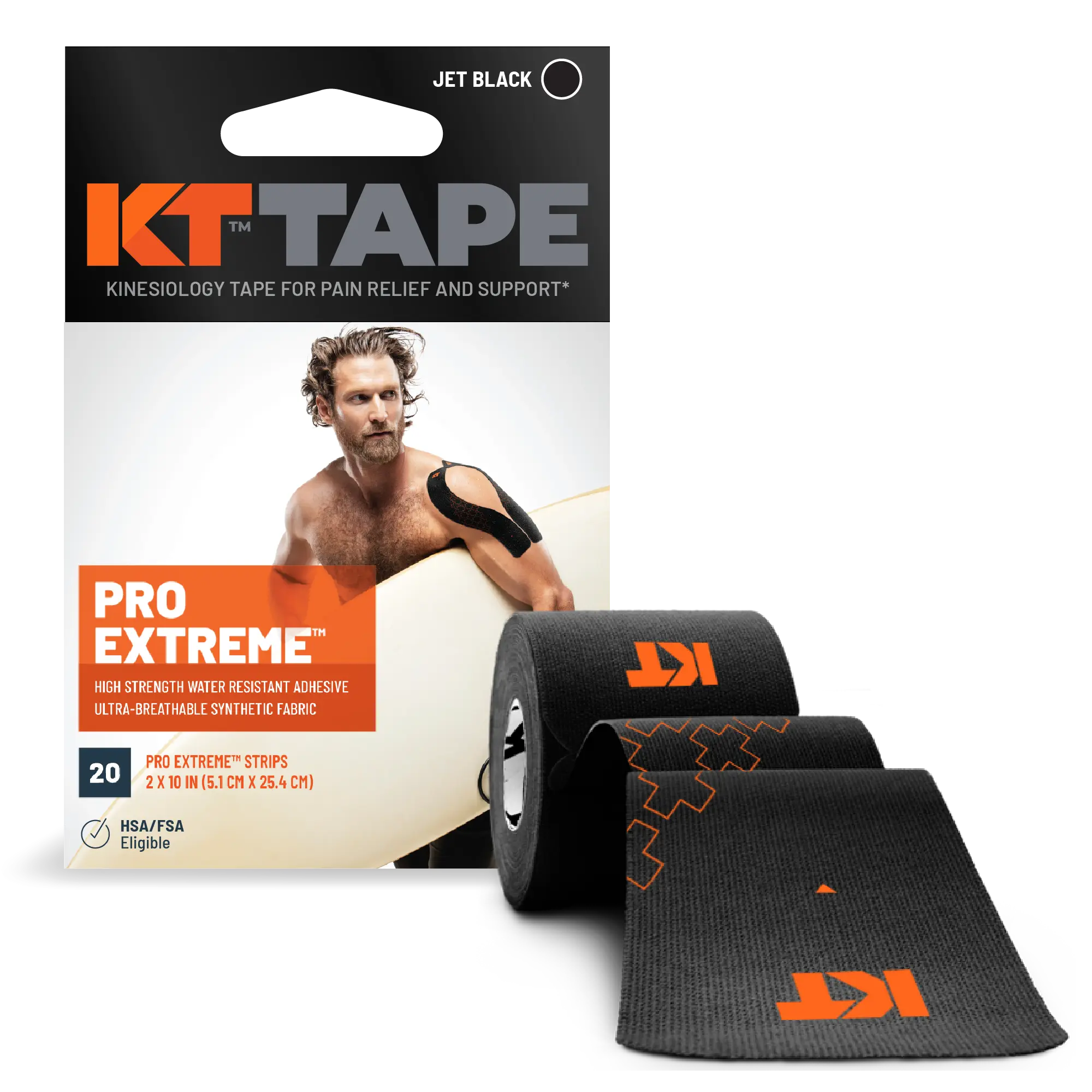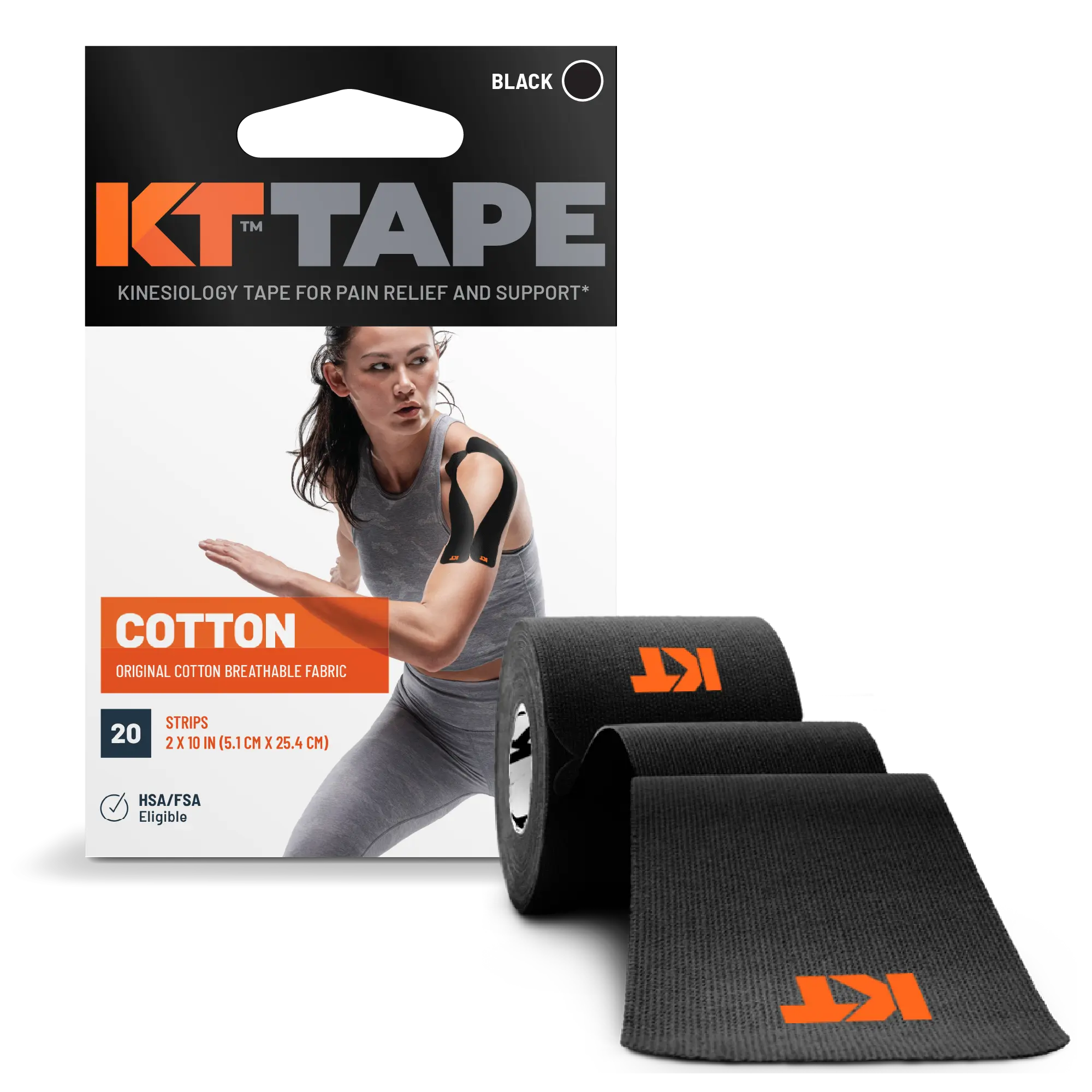Dr. Kenneth Thomas BS, MS, DC, CCSP explains the causes, symptoms, and best treatment practices for Tennis Elbow, with a specific focus on how KT Tape works to alleviate pain and enhance the healing process.
What is Tennis Elbow?
Tennis Elbow is the common name describing the painful condition Lateral Epicondylitis (LE), speculatively caused by overuse of the forearm resulting in elbow pain. To no surprise, playing tennis and other racquet sports can be a culprit for its development. However, a variety of other activities or sports can also be the cause of this painful condition. Painters, plumbers, carpenters or others frequently and repetitively employing the use of forearm extensor muscles with gripping objects are prone to developing tennis elbow. The condition is not entirely inflammatory in nature, but rather degenerative by way of micro-tearing between the common extensor tendon and periosteum of the lateral epicondyle of the humerus. Here we want to provide general procedures for properly detecting, diagnosing, and treating tennis elbow with conservative and natural therapies. Additionally, our discussion leads to a discussion of possible means of preventing the condition from developing. Chances are most people complain of pain on the outside portion of their forearm near or at the elbow. While there are many causes of forearm or elbow pain, LE will stand out and is relatively easy to distinguish from other conditions. With someone suffering from LE, the common extensor tendon of the forearm will present as either painful or dysfunctional, or both. The specific tendon involved with LE is that of the Extensor Carpi Radialis Brevis (ECRB), which acts to stabilize the wrist when the elbow is straight. With its small origin, it transmits large forces through its tendon during repetitive grasping of objects. The repeated biomechanical motion of a tennis groundstroke is an example of the type of motion that could lead to the gradual wearing of the muscle at its origin. In some instances the sheer stress of all movements of the forearm gradually causes micro-tearing of the tendon, resulting in the buildup of scar tissue and thickening of the tendon.
What Causes Tennis Elbow?
The etiology of the condition described in literature suggests it arises from repetitive overuse, strenuous activity requiring speed and/or repetitive eccentric contraction of forearm muscles, and the controlled lengthening of the wrist extensor muscle group. Without delving too deeply into the energetics of muscular activity, it is poignant to mention that the energy demands of contracting even small skeletal muscles containing thousands of muscle fibers are enormous. In a continually contracting muscle, the fibers require specific nutrients and oxygen to sustain its continued use before it ultimately deteriorates. Perhaps because of a lack of a fueling nutrient supply, available literature discussing this injury identifies overuse as a common indicator. The form of overuse most aptly implied is through repetitive hand movements, especially the biomechanics necessitating excessive deviation of the wrist from its neutral position into extension, or even the high levels of physical strain to the wrist we described.
What are Common Symptoms of Tennis Elbow?
- The pain experienced with tennis elbow may have begun as the result of an abrupt injury to the elbow, but more commonly is described as developing over time, insidious in nature.
- Pain about 1-2 cm down from the bony area at the outside of the elbow, more specifically at the lateral epicondyle of the humerus.
- Weakness in the wrist with difficulty doing simple tasks such as turning (external torqueing) a doorknob, shaking hands with someone, or pouring a glass of water from a pitcher.
- In light of one surgeons review of non-therapeutic modalities being unproven at best, the efficacy of conservative treatment procedures have not distinctly been demonstrated, even through rigorous clinical trials. However, in several randomized controlled trials (RCTs) improvements in the LE conditions were noted. Exercise and stretching as an intervention shows that eccentric contraction Pain on the outside of the elbow when trying to straighten the fingers against resistance.
- Morning stiffness felt in the forearm and around the elbow.exercises are more effective than contract-relax stretching exercises for complete recovery of the condition. Yet stretching of the extensor muscle group also proves to assist with ameliorating the condition to some degree.

How Does KT Tape Work For Tennis Elbow?
KT Taping techniques are advocated for chronic musculoskeletal conditions such as lateral epicondylitis. A growing body of empirical evidence as well as a substantial body of evidence based research demonstrates its efficacy. Perhaps because the KT Taping is effective in providing support to muscle function, as well as improving circulation and oxygen supply to the surrounding area where applied, it allows muscles and tendons to repair more quickly. A preliminary study demonstrated an initial ameliorative effect of a KT Taping technique for LE and suggests that it should be acknowledged as an adjunct in the management of this condition. Conservative therapies that were rated low on efficacy included Ultrasound, and Low Level Laser.
Prevention
As it relates to playing sports - experience, ability, technique and the use of appropriately sized equipment may all be factors to consider when preventing LE. Other preventative measures to consider include:
- Remaining in overall good physical condition.
- Reducing the time spent doing the activity that causes the condition to develop.
- Increase muscular strength of the muscles surrounding the joint to provide stability to the elbow.
- Strengthen the muscles of the forearm, the upper arm, the shoulder, and upper back.
- Maintain proper biomechanics during activity.
- Maintain proper joint positioning.
- Maintain a healthy nutrient supply to the body through diet and supplementation to assist the body with its natural function and repair processes.
- Pea vine juice contains nutrients to assist in the proper formation of ligaments and tendons, assists with tissue repair, and promotes health circulation.
- Manganese supports the health and maintenance of connective tissues, ligaments and tendons; it promotes bone growth, as well as the synthesis of cartilage and synovial fluid lubricating synovial joints.
- Calcium is required for the bodys ability to form strong bones, and for proper muscular growth and contraction.
- Carbamide, flavonoids, phosphorous, as well as B and C vitamins all synergistically aid in the bodys natural anti-inflammatory response.
- B complex vitamins and amino acids assist the body through its natural repair process of connective tissue.
- Enzyme CoQ-10 assists with oxygen delivery to muscles and tendons.
For instructions on how to tape for Tennis Elbow, click here.
Dr. Kenneth Thomas, B.S., M.S., D.C., C.C.S.P. and Vice President of Academics at Parker College of Chiropractic is a 1986 graduate of Parker College and holds a masters degree in physical therapy. While in private practice, Dr. Thomas promoted an integrated health care system of Chiropractors, Physical Therapists and specialists allowing for a complete holistic health care approach for the patient. After twenty years of clinical practice, he is a respected expert in the chiropractic field and lectures extensively on the use of modalities and exercise in chiropractic practice, as well as treatment of sports injuries, current trends in health care and various aspects of a wellness lifestyle. He is a board member of FICS and a Certified Chiropractic Sports Physician who has worked with many Olympic and professional athletes over the last 20 years.









